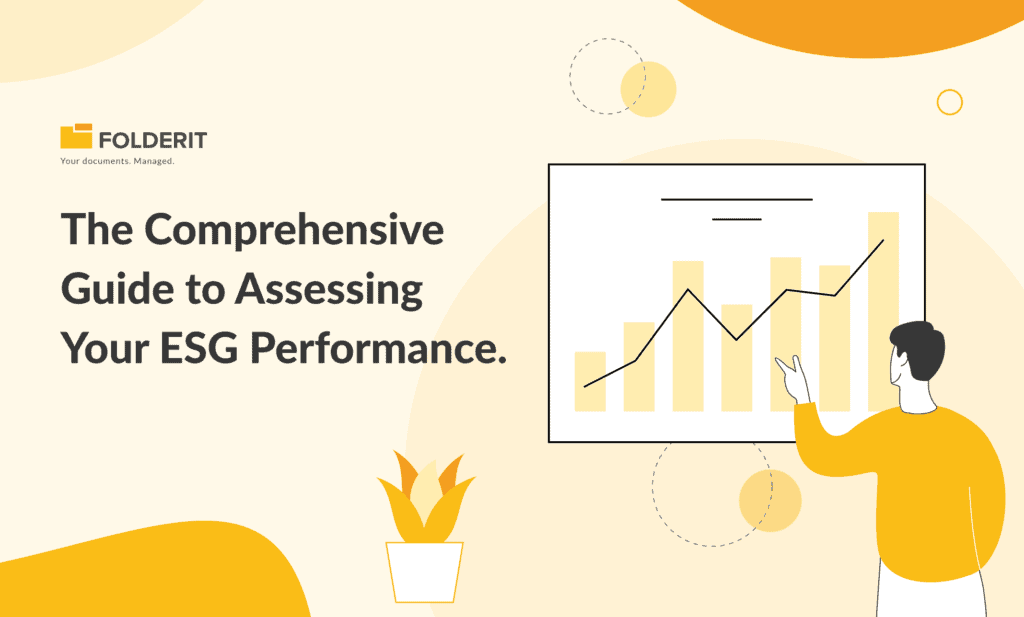The intersection of profitability and sustainability has never been more critical, as businesses globally grapple with the imperative to intertwine financial success with ethical, social, and environmental responsibility. The meticulous journey through Environmental, Social, and Governance (ESG) assessment is not merely a reflection of corporate responsibility but a strategic foundation that underpins sustainable growth, stakeholder trust, and a resilient future.
In this comprehensive guide, we delve into the multifaceted dimensions of ESG performance assessment, exploring the methodologies, strategies, and advanced practices that not only elevate corporate sustainability but also forge a path towards impactful, ethical, and prosperous business operations.
The Pillars of ESG: A Brief Overview
Environmental, Social, and Governance (ESG) stand as the three pillars that collectively encapsulate a corporation’s approach towards sustainability, ethical operations, and its societal and environmental impact.
The ‘Environmental’ component scrutinizes the company’s ecological footprint and its initiatives towards mitigating environmental harm.
‘Social’ delves into the company’s relationships with its employees, suppliers, customers, and communities, assessing its commitment towards fostering a healthy and equitable social environment.
Lastly, ‘Governance’ evaluates the quality of a company’s management, its corporate behavior, and its adherence to compliance, ethics, and shareholder interests.
Embarking on the ESG Assessment Journey: Preliminary Steps
The journey towards a thorough ESG performance assessment commences with the establishment of a framework that aligns with global standards, such as the Global Reporting Initiative (GRI) or the Sustainability Accounting Standards Board (SASB). Begin with identifying and understanding the ESG factors that are most pertinent to your industry and business model. This involves:
- Materiality Assessment: Identifying the ESG issues that significantly impact your business and stakeholders.
- Stakeholder Engagement: Actively involving stakeholders in the ESG assessment process to ensure inclusivity and comprehensiveness.
- Benchmarking: Analyzing peer and industry ESG practices to establish a comparative performance baseline.
Navigating Through the ESG Assessment Process
- Data Collection and Management: Implement systems to collect, manage, and analyze ESG data effectively, ensuring accuracy and reliability.
- Performance Analysis: Evaluate the collected data against established benchmarks, identifying gaps, and areas of improvement.
- Risk Management: Identify and assess potential risks related to ESG factors, developing strategies to mitigate them effectively.
- Integration with Business Strategy: Ensure that ESG goals and strategies are cohesively integrated with the overall business strategy, fostering alignment and coherence.
- Continuous Monitoring: Establish mechanisms for ongoing ESG performance monitoring, ensuring adaptive and responsive strategies in alignment with evolving global standards and stakeholder expectations.
Leveraging Technology in ESG Assessment
Employing ESG software and platforms can streamline data collection, enhance accuracy, facilitate comprehensive analysis, and enable the generation of insightful reports that can inform strategic decisions and external communications.
Legal and Compliance Adherence
Ensuring that your ESG assessment and reporting are in strict adherence to legal and regulatory requirements is crucial to avoid potential litigations and to uphold stakeholder trust. This involves staying abreast of evolving regulations, ensuring transparency, and maintaining comprehensive documentation that substantiates your ESG claims and reports.
Strategies for ESG Enhancement
As organizations delve deeper into the ESG assessment, the focus shifts towards not only maintaining compliance and meeting benchmarks but also pioneering advanced strategies that enhance ESG performance, driving innovation, and establishing leadership in sustainable practices.
- Innovation in Sustainability: Explore and invest in innovative solutions that enhance sustainability, such as adopting clean energy, implementing circular economy practices, and developing eco-friendly products.
- Employee Well-being and Development: Establish programs that prioritize employee well-being, promote diversity and inclusion, and foster continuous learning and development.
- Supply Chain Sustainability: Ensure that sustainability is embedded throughout the supply chain, from responsible sourcing to ethical manufacturing practices.
Transparent and Insightful ESG Reporting
Transparent reporting is pivotal in validating your ESG assessment and establishing credibility among stakeholders. ESG reports should be:
- Transparent: Clearly articulate the methodologies, benchmarks, and standards used in the ESG assessment.
- Comprehensive: Provide a holistic view of ESG performance, encompassing successes, challenges, and future strategies.
- Stakeholder-centric: Ensure that the report addresses the concerns and interests of diverse stakeholders, including investors, employees, and communities.
Enhancing ESG Through Collaborations and Partnerships
Collaborating with NGOs, governmental bodies, and industry consortiums can amplify your ESG efforts, providing access to additional resources, expertise, and platforms to drive sustainable initiatives.
- Partnerships for Sustainable Development: Engage in partnerships that drive sustainable development goals, enhancing your societal and environmental impact.
- Industry Collaborations: Participate in industry consortiums and forums that promote ESG best practices and collaborative initiatives.
The Role of Leadership in ESG Performance
Leadership plays a crucial role in steering ESG performance, from setting the vision to ensuring that ESG principles are embedded throughout the organizational culture.
- Visionary Leadership: Leaders should articulate a clear and inspiring ESG vision, driving motivation and alignment among employees.
- Ethical Leadership: Uphold and exemplify ethical practices, ensuring that governance mechanisms are transparent, fair, and responsible.
Folderit’s Commitment to Sustainability
Folderit stands as a testament to the profound impact a dedicated DMS can have in propelling the paperless revolution, aligning operational efficiency with sustainability. The platform not only enables organizations to transition towards paperless operations but also exemplifies sustainability in its own practices.
Folderit’s DMS minimizes the ecological footprint by reducing the reliance on paper, optimizing energy usage through cloud solutions, and ensuring secure, accessible, and efficient document management, thereby substantiating the practicality and efficacy of sustainable practices in the real world.
Conclusion: Pioneering a Sustainable Future with ESG
Assessing and enhancing ESG performance is not just a compliance requirement but a strategic imperative that underlines sustainable success, stakeholder trust, and societal impact. As organizations navigate through the complexities of ESG assessment and reporting, the focus should be on fostering a culture of sustainability, ethical operations, and transparent governance that permeates throughout the business ecosystem.
By doing so, businesses not only contribute towards a sustainable future but also enhance their own resilience, profitability, and societal value, pioneering a future where profitability and sustainability coalesce into a harmonious synergy.



